*NURSING > STUDY GUIDE > MATERNITY EXAM #1 STUDY GUIDE ( EXCELLENT STUDY GUIDE ) (All)
MATERNITY EXAM #1 STUDY GUIDE ( EXCELLENT STUDY GUIDE )
Document Content and Description Below
MATERNITY EXAM #1 STUDY GUIDE PREGNANCY TERMINOLOGY: Pregnancy o 40 weeks/10 lunar months/280 days 1st 1-13 weeks 2nd14-26 weeks 3rd27-40 weeks Term = 38-42 weeks ... Pre-term = 20-37 weeks, 6/7 days Post-term = 42+ weeks o NAGEL’S RULE (to determine due date) LMP – 3 months + 7 days & 1 year OR LMP + 7 + 9 months Neither are exact, 2 month window on either side “hence why 38- 42 weeks is ‘term’ Sonographic dating helps increase accuracy, especially in women who don’t have normal 28 day cycle o Gravida Indicates current state of pregnancy/ # of pregnancies experienced Nulla gravida: never been pregnant Primi-gravida: 1st pregnancy Multi-gravida: 2nd or more pregnancy o Para Description of pregnancy outcome (FT, abortion, miscarriage, labor) Single number given: pregnancies that have reached viability 4 number system: specific outcomes of ALL pregnancies o Parity: TPAL system T: # pregnancies that reached term P: # pregnancies delivered pre-term A: # pregnancies ended prior to age of viability (~20wks) Voluntary or spontaneous abortion L: # living children ANTEPARTUM (PHYSIOLOGY, CARE, NUTRITION) [14 Questions]DETERMINING PREGNANCY: Presumptive signs/symptoms o Missed period o Breast tenderness o Nausea Probable signs/ symptoms o Goodell’s sign: softening of the cervix o Chadwic’s sign: bluish-purple discoloration of cervix/uterus o Hegar’s sign: softening of the uterus o + Urine pregnancy test (clinical positive) Most are 98% accurate; false negatives possible if done too early Positive signs/ symptoms o Lab confirmation (clinical positive) Blood test for hCG (human chorionic gonadotropin) Earliest biochemical marker of pregnancy Urine pregnancy tests based on recognition of this as early as 4 days after conception In theory: BEFORE missed period Uses ELISA marker method Blood test provides “numerical” analysis of pregnancy Values increase incrementally with growing pregnancy (how much in blood stream) Used more often to verify “growth” w/ spotting or risk of “problems” (if number stops rising, something is wrong) o Visualization of fetus o Sonogram/audible heartbeat PHYSIOLOGICAL ADAPTATIONS TO PREGNANCY: Hormones o Progesterone Stays high from corpus luteum Inhibits uterine activity (shedding of lining) o hCG Increases o Estrogen Promotes growth of uterine tissues o hPL Insulin antagonist Triggers milk production Makes women at risk for gestational diabetes To reduce risks: Preconception counseling Appropriate BMI, diet, etc. o Prostaglandin Stimulates labor Uterus o Changes in size, shape, and position w/ growing fetus At 12wks size of grapefruit and anterior 22-24wks at height of umbilicus Measured in cm from symphysis pubis: number should correspond to weeks of gestation (24 weeks should = 24cm, 2 cm window on either side) o Uteroplacental blood flow Increased maternal blood flow to uterus to cross placenta o Cervical changes Increased vascularitysoftening & blue Increased vaginal discharge Ballottment: examiner feels “floating fetus” Quickening Maternal perception of fetal movement ~18 weeksshould continue through pregnancy May feel like gas, bubbles, etc. Keep in mind a baby’s sleep cycle is 30-90 minutes and may be why the mother doesn’t feel movement Lightening Baby drops down into pelvis (after ~36 weeks) However…if breeched, won’t really drop Not all babies drop o Breasts Fullness, heaviness Heightened sensitivity (tingling to sharp pain) Areolae become more pigmented Montgomery’s tubercles glands/bumps on the areola Colostrum begins developing by 16 weeks o Cardiovascular 50% increase in blood flow, mostly plasma Need to be able to send more blood to go to uterus to send O2 & nutrients to the baby Increased cardiac output Physiological anemia due to hemodilution (more plasma, not enough blood components) Increased demand for iron Track CBC in beginning of pregnancy & 3rd trimester Increased demand for oxygen Pulse increase in 2nd trimester until term (10-15 bpm higher) Blood Pressure Decreased in 2nd tri, return to normal at term Pressure on vena cava due to gravid uterus; decreased venous return to the heart Decrease venous return = decreased BP & CO Also decreased blood to baby Supine hypotension... lower BP in extremities and baby but higher for mother (short term) Women advised against sleeping on back o Coagulation Increased coagulation times= hypercoagulable At increased risk for DVTs, however most don’t get them o Respiratory Thoracic breathing Greater expansion Pressure from crowded uterus Increased metabolic rate Increased demand and consumption of oxygen Congestion o GI System N/Vworse in 1st trimester, improves after 12 weeks Heartburn Altered metabolism Changes in carb metabolism, increasing resistance to insulin Increased risk of gestational diabetes Delayed gallbladder emptying time Constipation/hemorrhoids PICA Craving non-food substances (paper, clay, dirt) Not common; alert HCP Assess for iron deficiency anemia o Renal Increased GFR due to increased CO Dilation of ureters/ increased pressure = increased urination Increased reabsorption of Na+ Some glucose spills at serum levels <160 Report any glucose, protein, ketones in urine to HCP [Show More]
Last updated: 1 year ago
Preview 1 out of 31 pages
Instant download

Instant download
Reviews( 0 )
Document information
Connected school, study & course
About the document
Uploaded On
Aug 05, 2021
Number of pages
31
Written in
Additional information
This document has been written for:
Uploaded
Aug 05, 2021
Downloads
0
Views
26


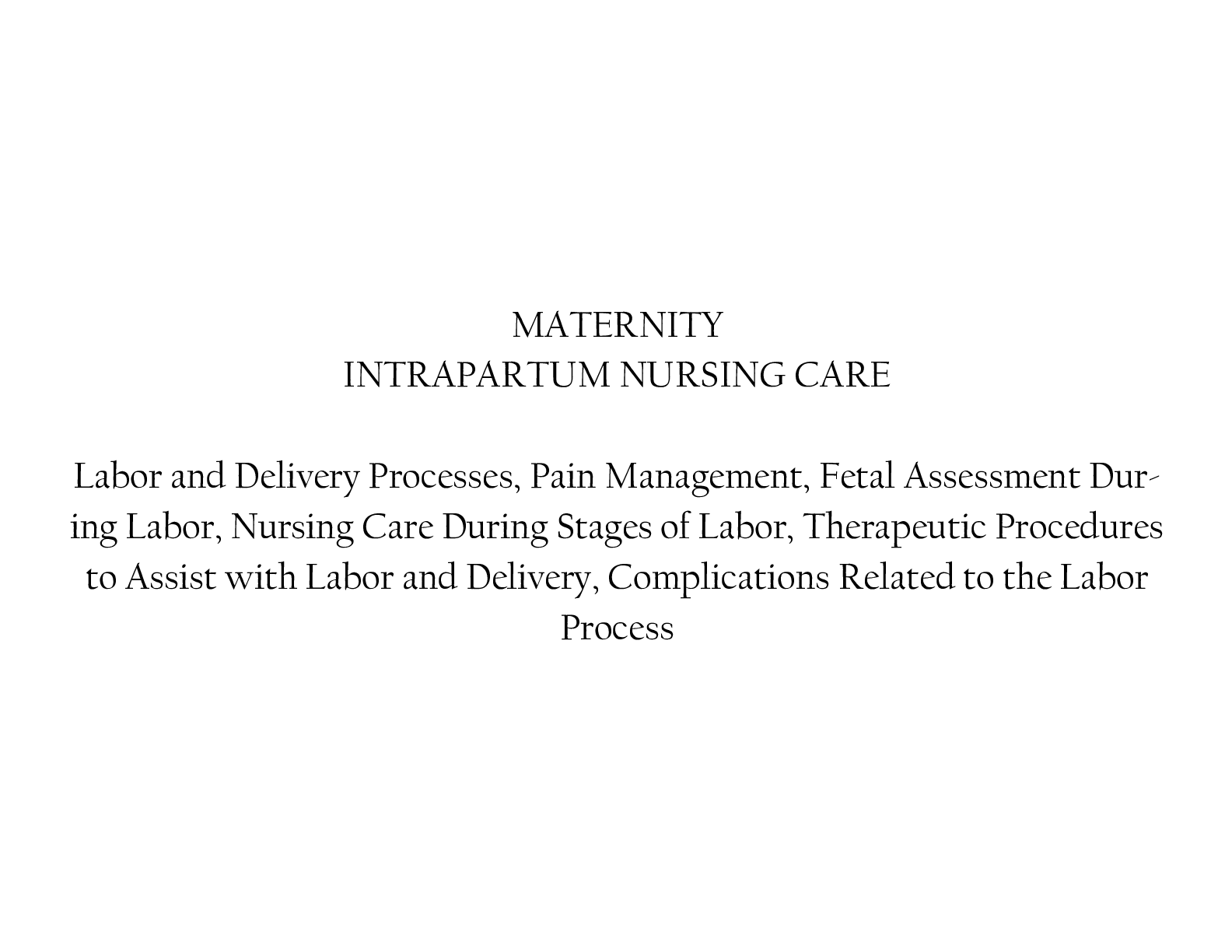

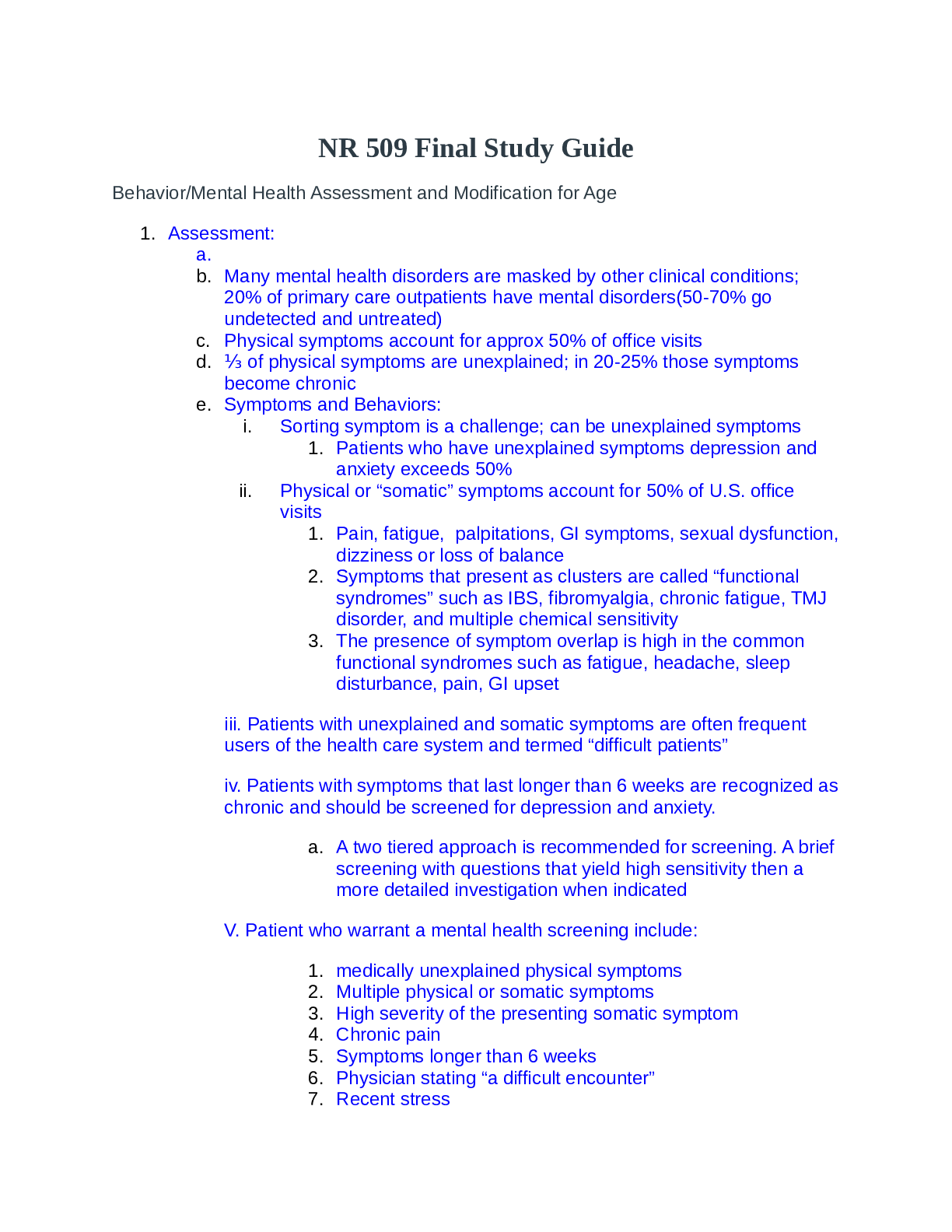
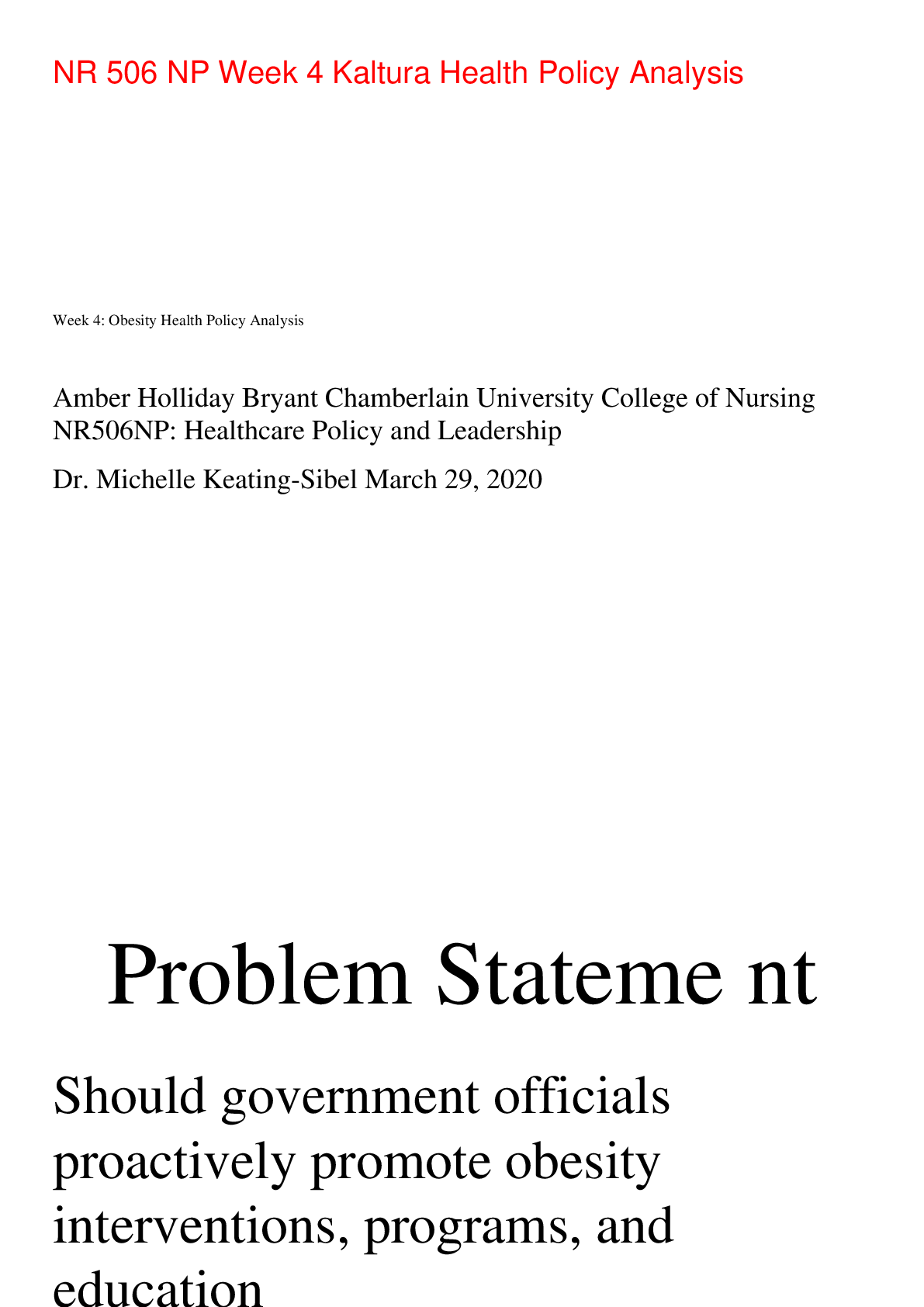
.png)
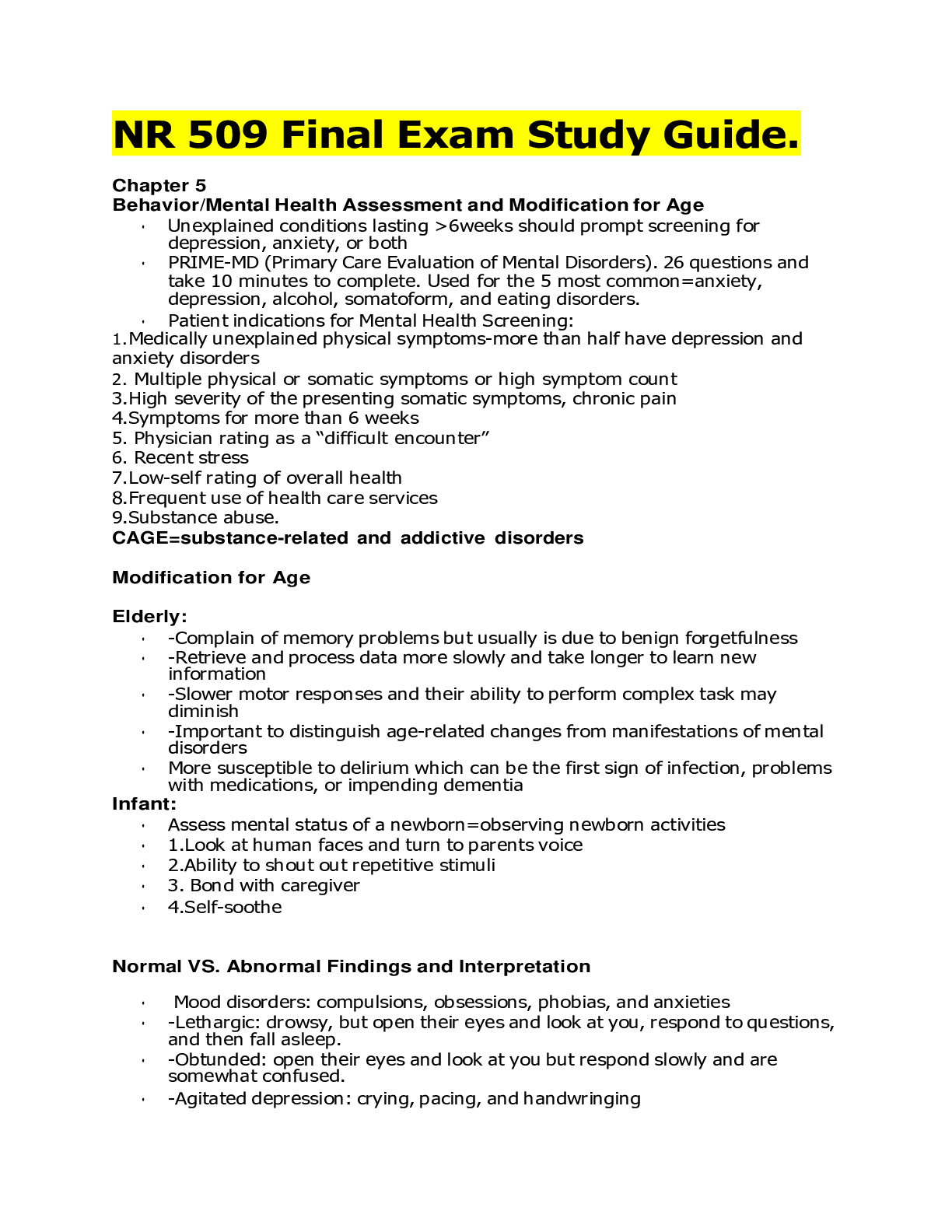
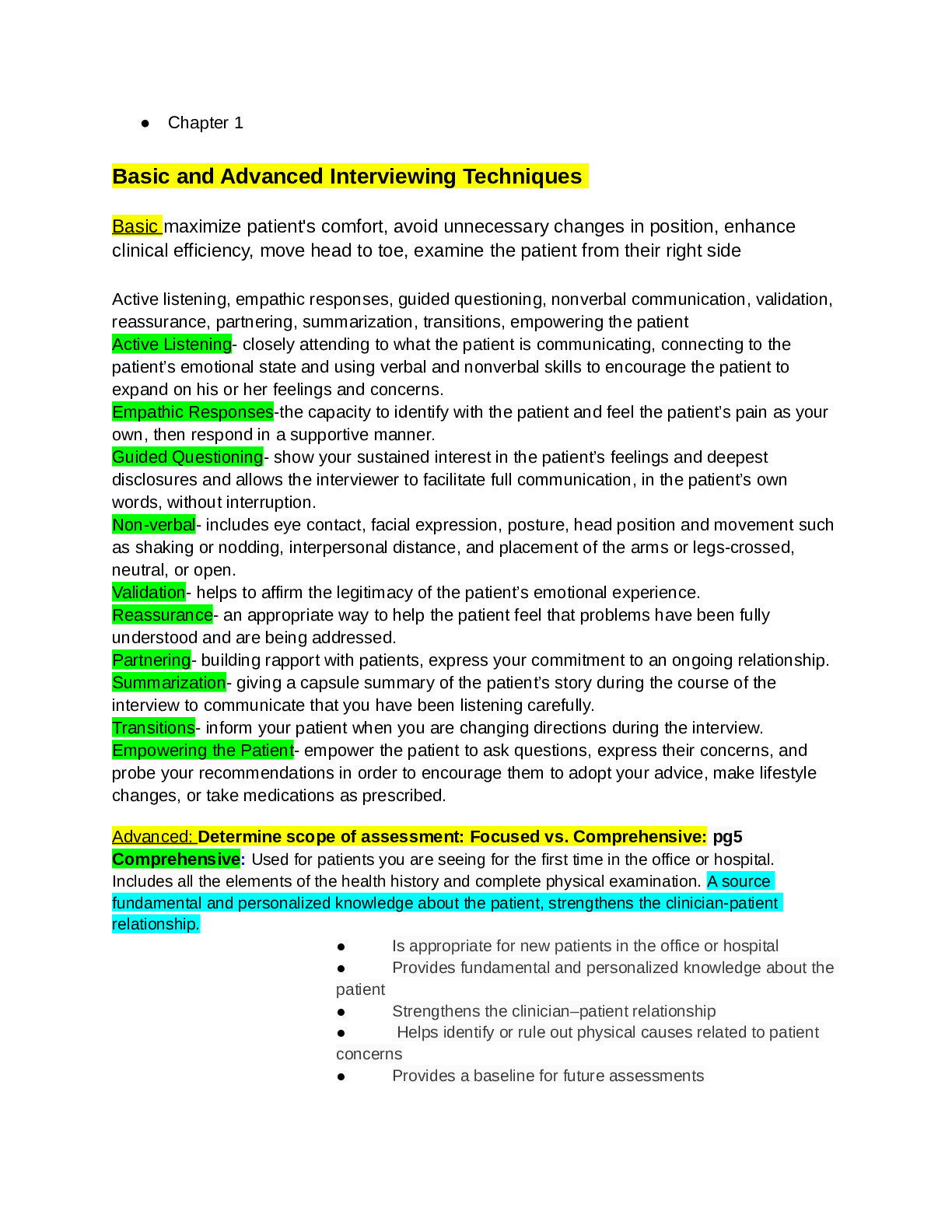



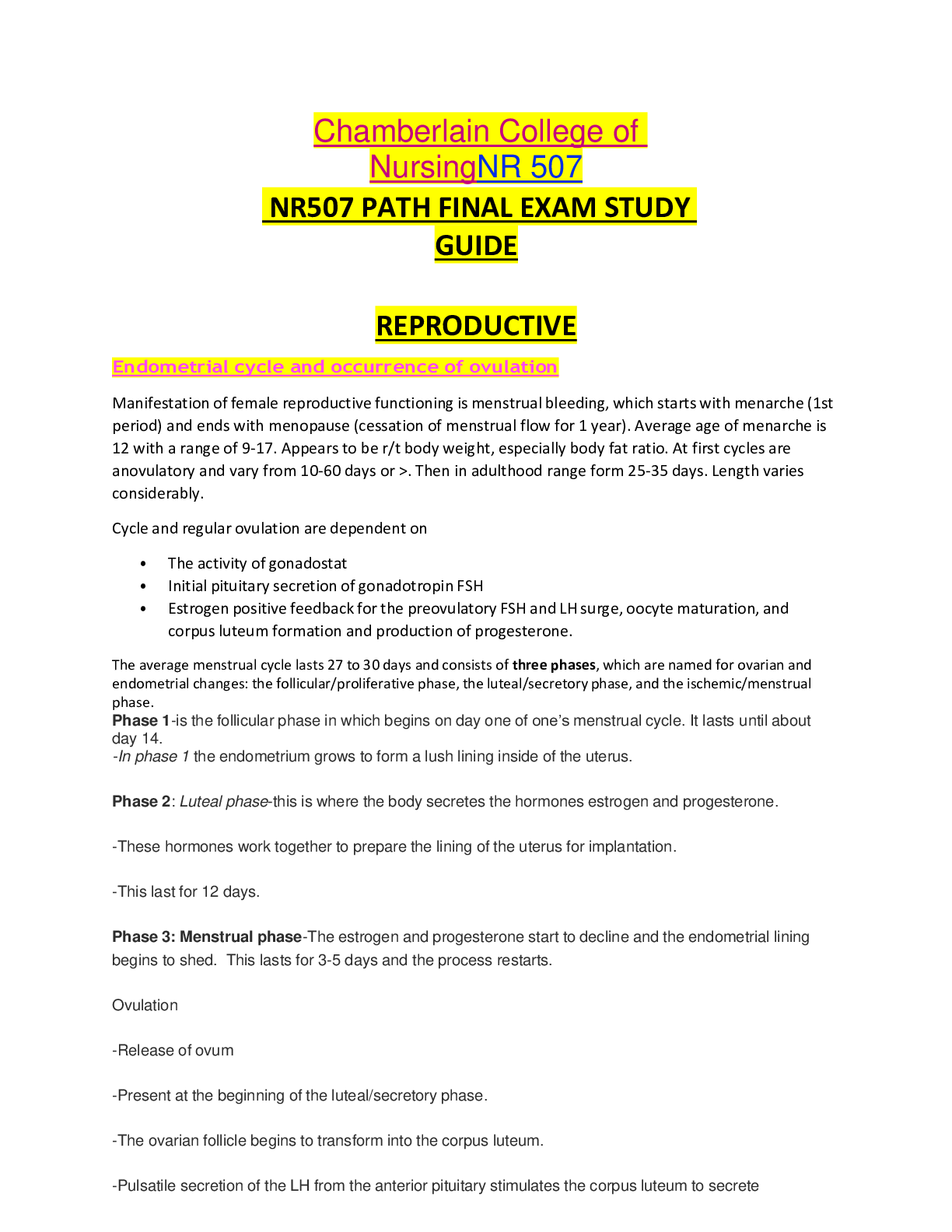
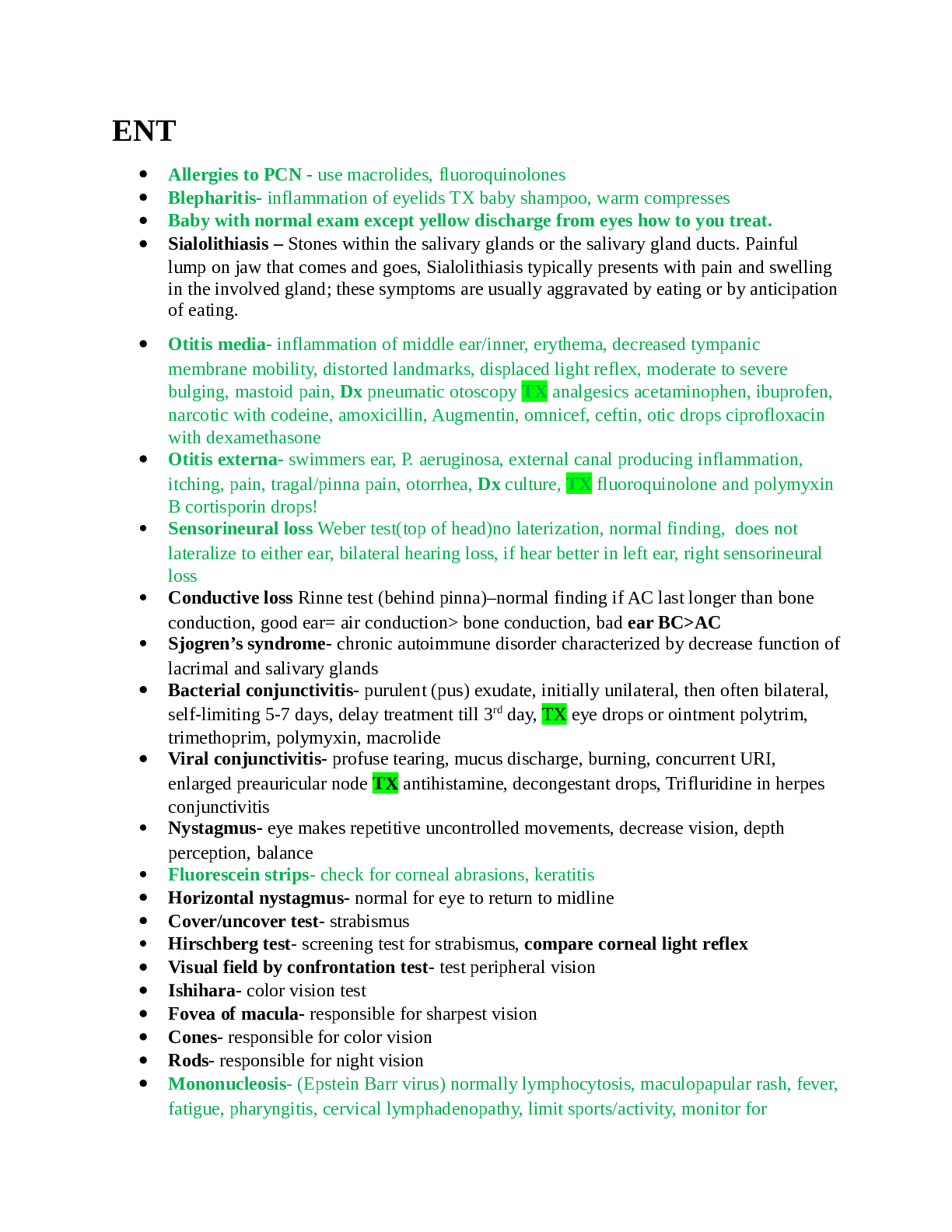


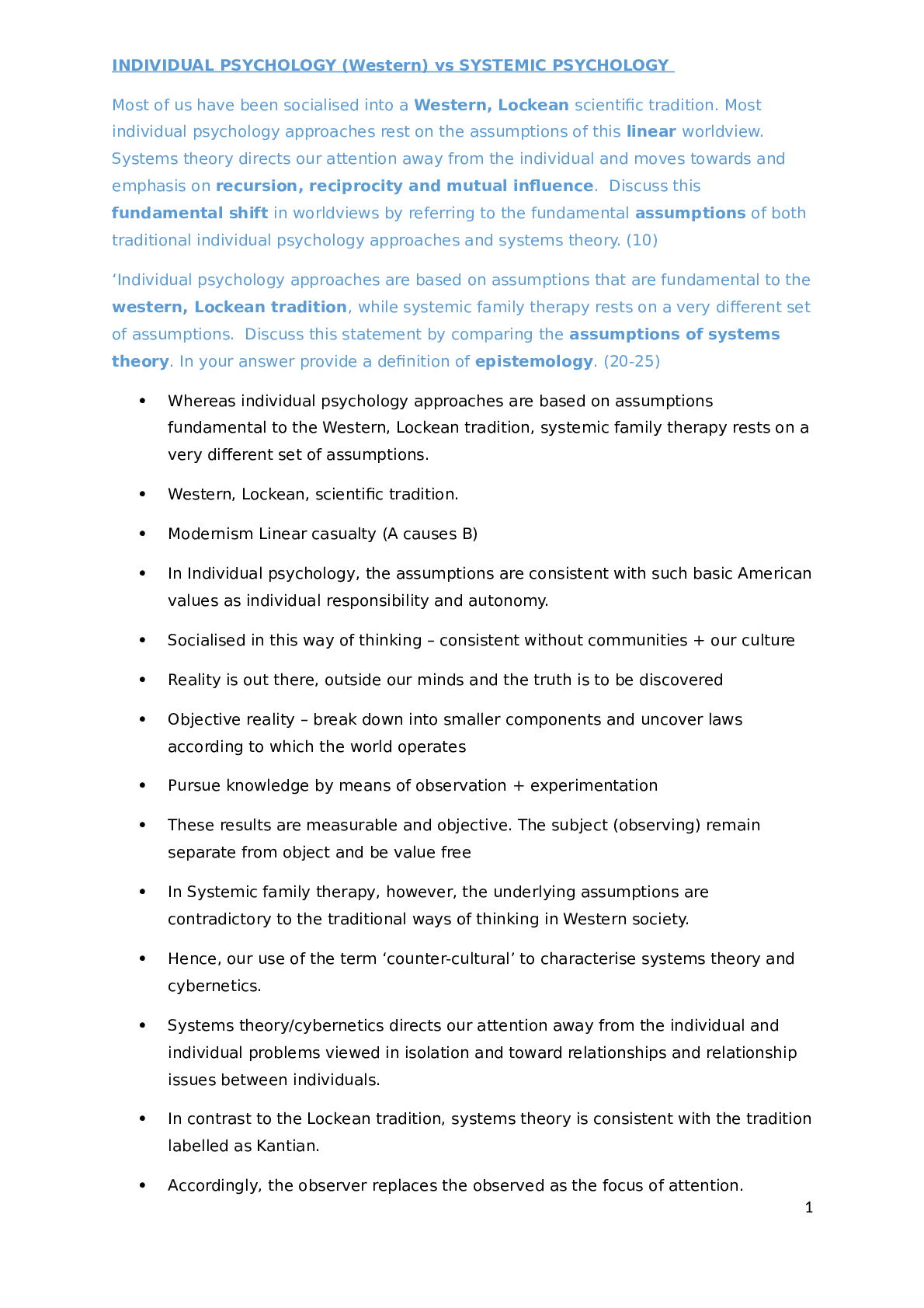
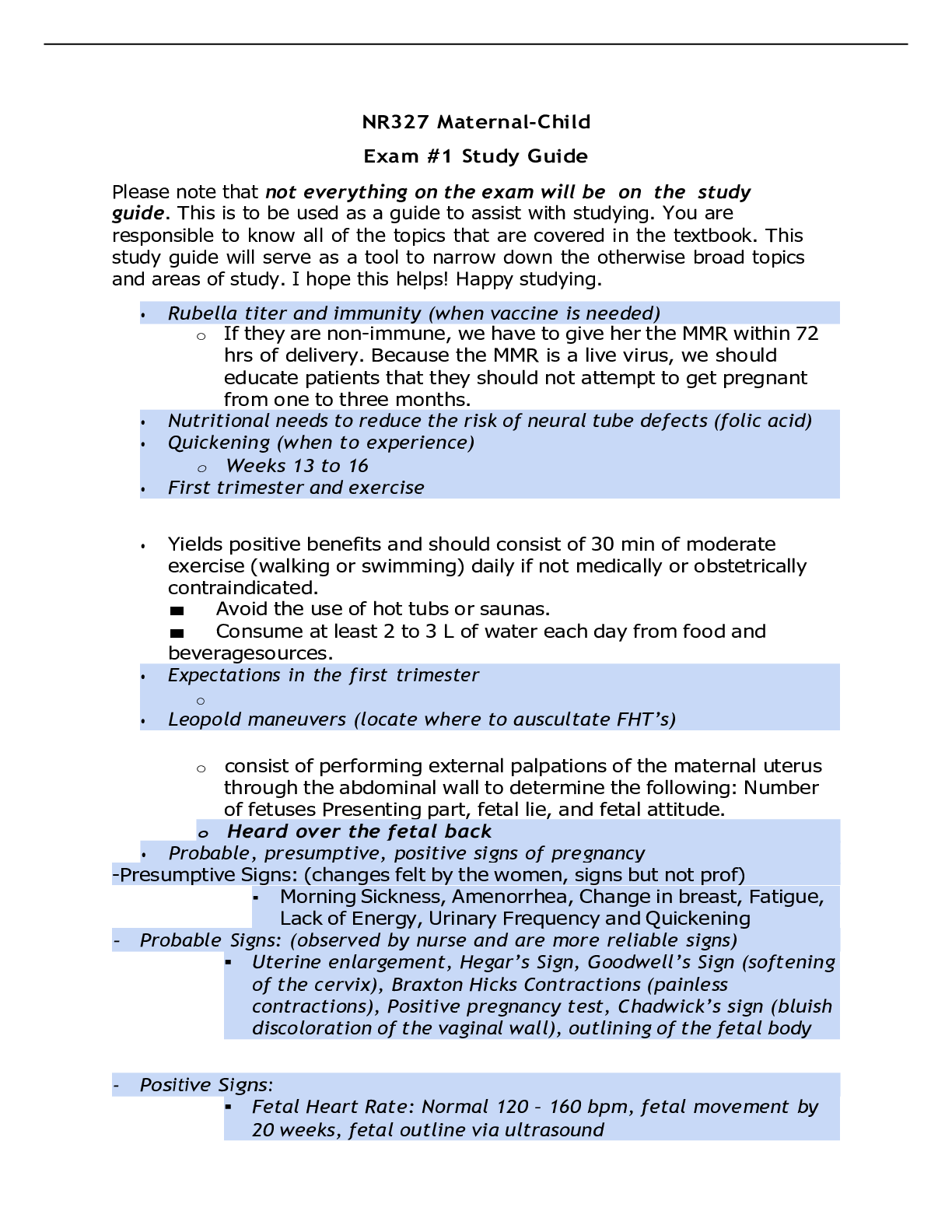



.png)
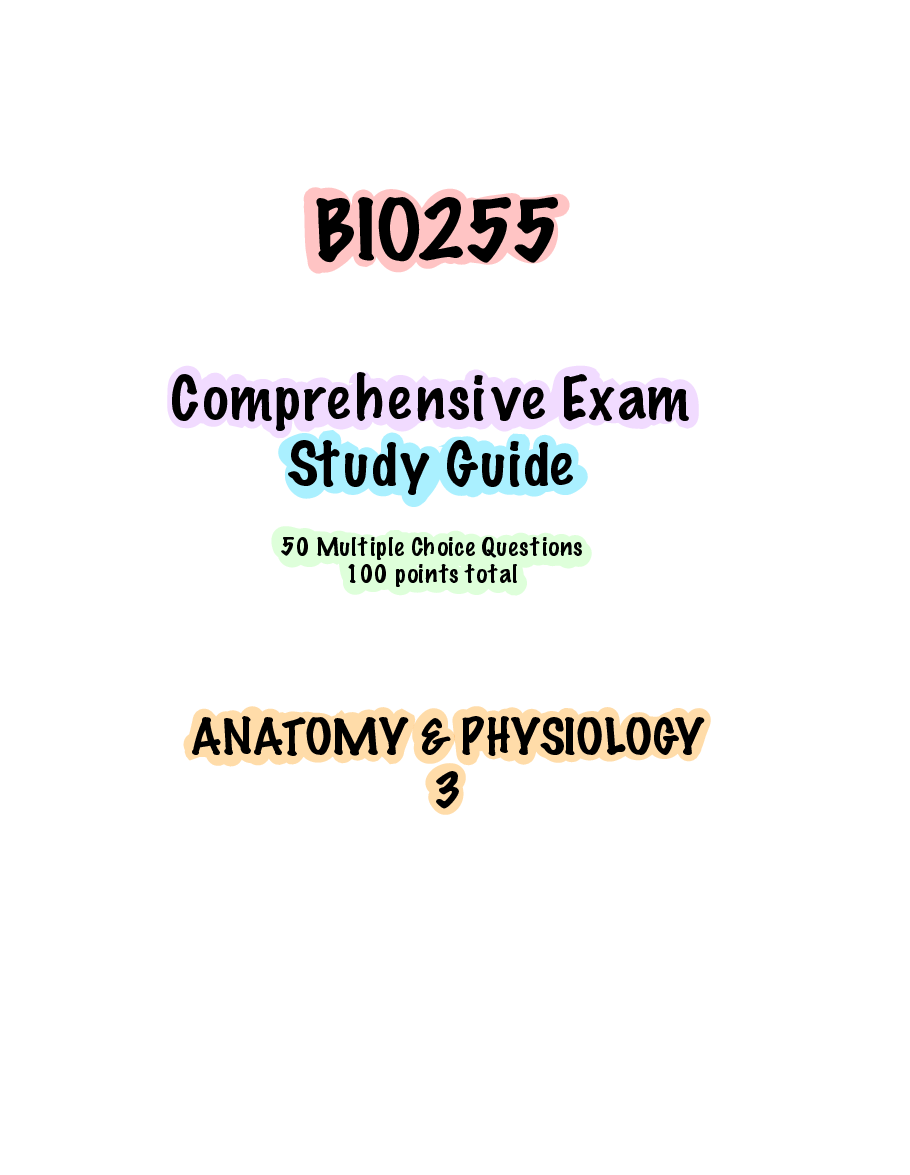

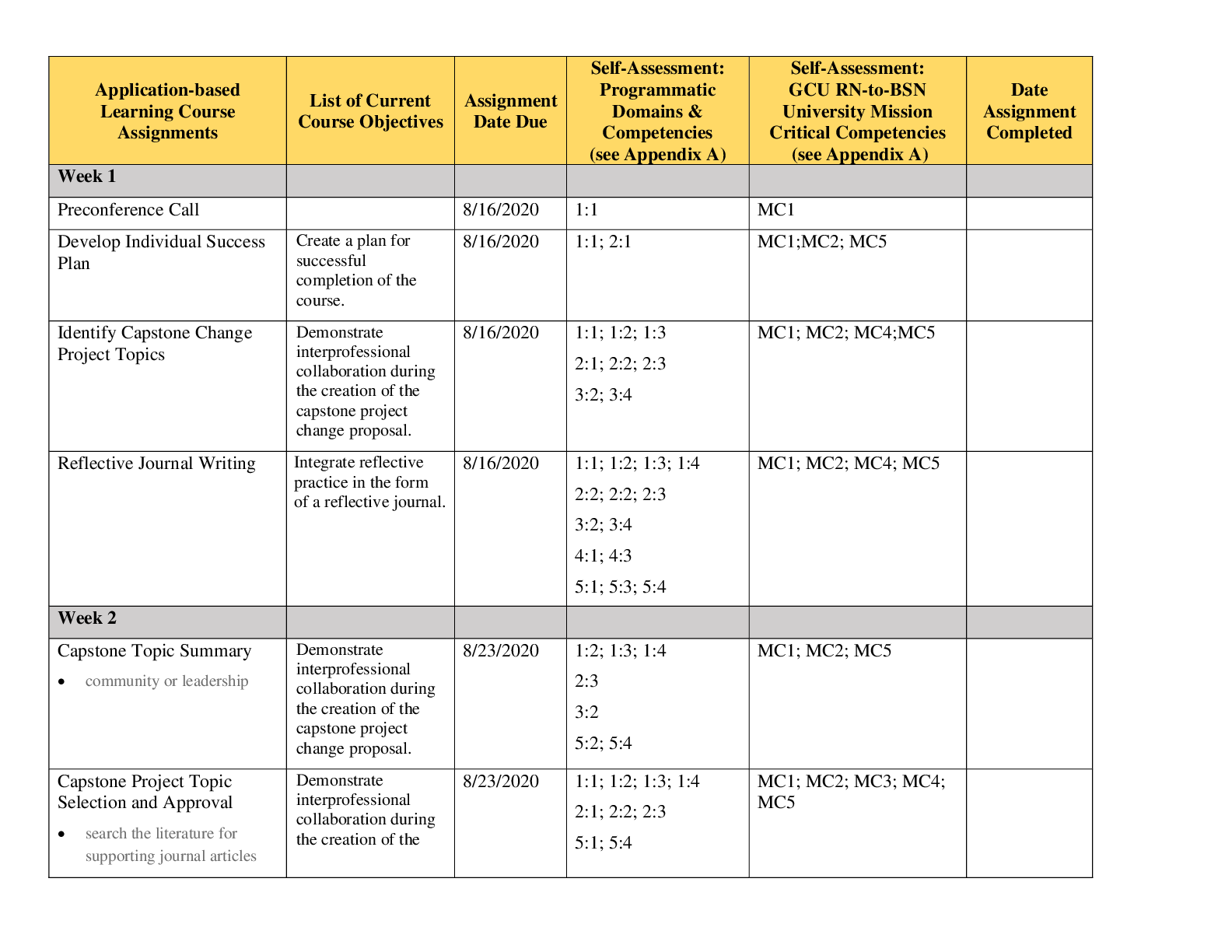






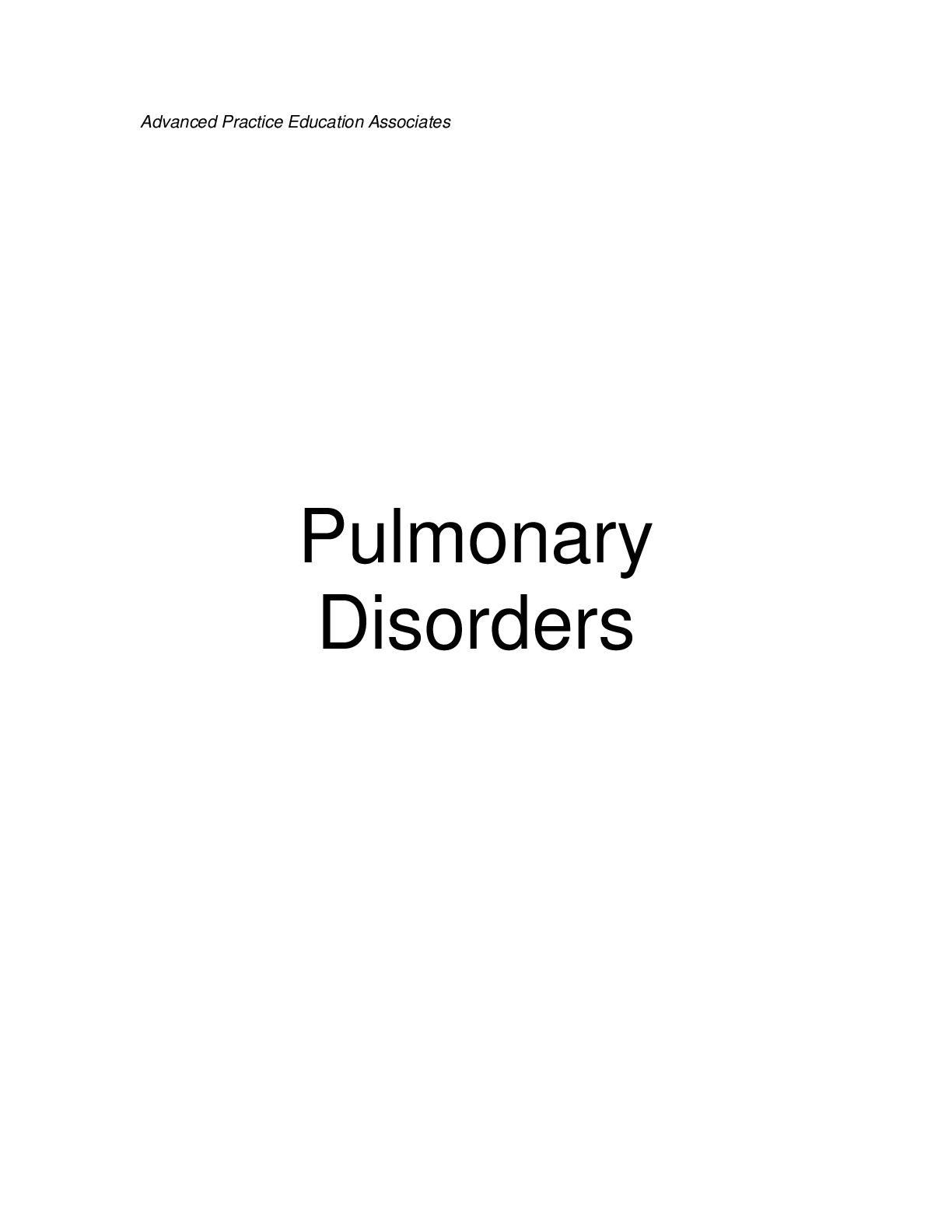
.png)




